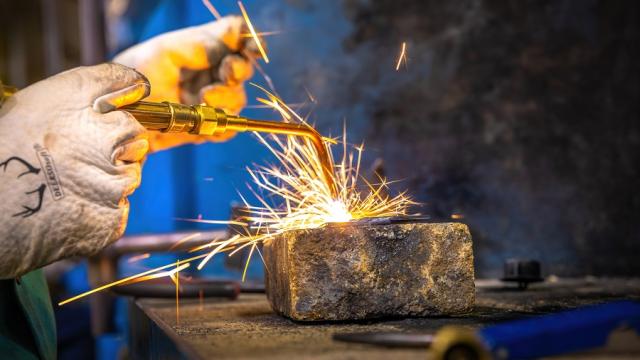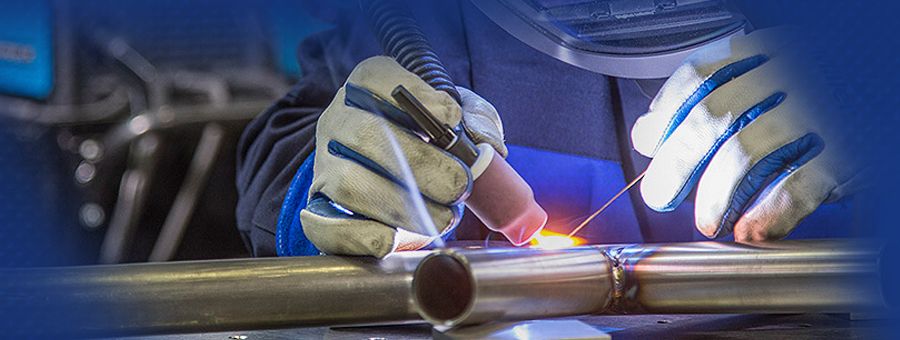Best ways to deal with warping in Montana Mobile Welding and Repair Belgrade
Typical Welding Fixing Issues and How to Address Them Efficiently
Welding fixings frequently experience a variety of issues that can endanger the honesty of the end product. Usual problems consist of inadequate infiltration, porosity, and imbalance, among others. Each flaw presents special challenges that need specific methods for resolution. Comprehending these problems is crucial for welders intending to enhance their results and skills. This discussion will discover these usual welding repair service concerns and reliable techniques to resolve them.
Insufficient Infiltration
Poor penetration happens when the weld metal stops working to fully fuse with the base material, resulting in weak joints and potential architectural failings. This issue frequently comes from inadequate warm input, inaccurate electrode angle, or incorrect welding rate. Welders may come across insufficient penetration because of a mistake of the needed criteria for a particular material thickness or type. Additionally, contamination on the base product's surface can hinder efficient bonding, worsening the issue. To address inadequate infiltration, welders should guarantee appropriate settings on their tools and preserve a tidy job surface area. Regular evaluation of welds is suggested to determine any kind of shortages early, permitting for timely adjustments and the prevention of jeopardized architectural stability in bonded settings up.
Porosity
Porosity is an usual flaw in bonded joints that materializes as tiny gas bubbles trapped within the weld metal. This problem can compromise the integrity of the weld, bring about reduced strength and possible failing under tension. Montana Mobile Welding and Repair Welding. Porosity normally develops from contamination, wetness, or inappropriate welding techniques, which allow gases to get away into the liquified weld swimming pool. To address porosity, welders must guarantee correct surface prep work, keep a clean workplace, and use appropriate welding parameters. In addition, choosing the best filler material and protecting gas can alleviate gas entrapment. Normal evaluation and testing of welds can assist identify porosity early, ensuring prompt rehabilitative actions are taken, therefore protecting the high quality and dependability of the bonded structure
Misalignment
Imbalance in welding can emerge from numerous elements, consisting of inappropriate configuration and thermal growth. Comprehending the origin is essential for effective resolution. Several improvement techniques are offered to straighten parts and ensure architectural integrity.
Reasons for Imbalance
Welding misalignment typically originates from a range of underlying issues that can jeopardize structural honesty. One key cause is incorrect fit-up of components before welding, which can cause spaces and uneven surface areas. Variants in thermal development throughout the welding process can likewise cause distortion, especially if the materials being signed up with have different coefficients of growth. Additionally, inadequate fixturing and clamping might fail to hold parts securely in place, leading to movement during welding. Badly maintained tools, consisting of welding devices and devices, may introduce inconsistencies in the weld grain, further contributing to imbalance. Driver mistake, stemming from insufficient training or experience, can additionally play a significant role in producing misaligned welds.

Adjustment Methods Offered
Attending to misalignment properly needs a mix of rehabilitative strategies tailored to the details issues at hand. One typical method is using jigs or components to hold parts in the appropriate placement during welding, ensuring regular placement. Furthermore, preheating the products can help in reducing distortion and enhance fit-up. For substantial misalignment, mechanical adjustment methods, such as utilizing hydraulic jacks or clamps, can be utilized to correct the position before welding. Post-weld heat treatment might additionally be needed to soothe stresses created by misalignment. Lastly, careful examination and modification throughout the setup phase can stop misalignment problems from becoming substantial troubles, advertising a smoother welding procedure and enhancing overall structural integrity.
Distortion
Distortion is an usual challenge in welding that can emerge from various elements, including unequal home heating and air conditioning. Recognizing the sources of distortion is necessary for implementing reliable prevention techniques. Addressing this issue not only boosts architectural honesty but also boosts the overall high quality of the weld.
Reasons for Distortion
When subjected to the extreme warmth of welding, materials often undertake modifications that can result in distortion. This phenomenon mainly develops from thermal growth and tightening during the welding procedure. As the weld location warms up, the material increases; upon air conditioning, it contracts, which can develop internal stresses. Additionally, uneven home heating across a workpiece can exacerbate these stress and anxieties, leading to bending or flexing. The kind of material likewise plays a significant duty; metals with varying thermal conductivity and coefficients of development might respond differently, bring about unpredictable distortions. Poor joint style and poor fixturing can add to imbalance throughout welding, increasing the probability of distortion. Understanding these causes is crucial for effective welding fixing and avoidance methods.
Prevention Techniques
Reliable avoidance methods for distortion during welding concentrate on controlling warm input and making certain appropriate joint style. Maintaining a constant warmth input assists to reduce thermal development and tightening, which can result in distortion. Making use of methods such as pre-heating the workpiece can likewise lower the temperature level gradient, advertising uniform heating. Furthermore, choosing ideal joint designs, such as T-joints or lap joints, can improve stability and decrease anxiety focus. Executing appropriate fixturing to safeguard the workpieces in position additionally aids in maintaining placement during the welding process. Staggered welding series can disperse heat a lot more equally, stopping localized distortion. By applying these strategies, welders can significantly lower the probability of distortion and boost the general top quality of their welds.
Cracking
Splitting look at this website is a typical issue encountered in welding repairs, typically arising from numerous aspects such as improper cooling rates, material option, or insufficient joint preparation. The incident of splits can significantly endanger the integrity of the weld, resulting in prospective failings throughout operation. To resolve this issue, welders should first examine the origin, making certain that materials work and properly selected for the details application. Furthermore, controlling the air conditioning rate throughout the welding process is necessary; fast cooling can induce stress and cause helpful resources breaking. Proper joint design and preparation likewise add to reducing the danger. Implementing these techniques can boost weld top quality and longevity, eventually decreasing the probability of splitting in ended up weldments.

Insufficient Blend
A significant issue in welding fixings is insufficient combination, which happens when the weld steel does not sufficiently bond with the base product or previous weld passes - Montana Mobile Welding and Repair. This defect can lead to weak points in the joint, possibly jeopardizing the integrity of the welded structure. Elements contributing to insufficient fusion include not enough heat input, incorrect welding strategy, and contamination of the surfaces being joined. To address this concern effectively, welders ought to ensure proper pre-weld cleansing and surface area prep work, along with readjust their welding criteria to attain ample penetration and combination. Routine inspection throughout the welding process can likewise assist determine incomplete blend early, permitting for timely restorative procedures to boost the overall quality of the weld
Overheating
While welding repair work can improve structural honesty, overheating provides a considerable challenge that can lead to material degradation. Too much heat throughout welding can alter the mechanical properties of metals, leading to minimized stamina, enhanced brittleness, and warping. This sensation is particularly critical in high-stress applications where structural integrity is paramount. Determining getting too hot can involve visual evaluations for discoloration or distortion, as well as monitoring temperature during the welding process. To mitigate the risks connected with getting too hot, welders home must employ appropriate methods, such as managing warmth input, readjusting traveling speed, and making use of appropriate filler products. Furthermore, implementing pre- and post-weld heat therapies can help restore material residential properties and improve the general quality of the repair, making sure long-term efficiency and safety.
Frequently Asked Concerns
What Are the Typical Indicators of a Welding Flaw?

Just How Can I Check My Welds for Quality?
To test welds for quality, one can utilize aesthetic evaluations, ultrasonic testing, and radiographic approaches. Each technique assures structural stability, determines defects, and confirms adherence to specified requirements, eventually improving the reliability of the bonded joints.
What Security Precautions Should I Take While Welding?
When welding, one must focus on security by putting on ideal personal protective tools, making sure proper air flow, protecting flammable products away, preserving a clean work area, and recognizing surroundings to avoid crashes and injuries.
Can I Fix a Weld Without Redoing the Entire Joint?
Repairing a weld without renovating the entire joint is possible, depending upon the damage (Belgrade Fabrication). Methods such as grinding, including filler material, or making use of a welding process can efficiently resolve particular defects while maintaining the surrounding structure
What Devices Are Vital for Effective Welding Fixes?
Vital tools for effective welding fixings consist of a welding machine, cable brush, grinder, safety equipment, clamps, and filler materials. Each device plays a crucial duty in making certain quality and safety throughout the fixing procedure. Porosity usually develops from contamination, moisture, or improper welding strategies, which permit gases to escape into the liquified weld swimming pool. Improperly conserved tools, consisting of welding equipments and devices, may introduce variances in the weld grain, additional adding to misalignment. When subjected to the intense warmth of welding, materials often undertake changes that can lead to distortion. Fracturing is a typical problem encountered in welding fixings, commonly resulting from numerous factors such as incorrect air conditioning prices, material selection, or insufficient joint prep work. A significant issue in welding fixings is insufficient combination, which takes place when the weld steel does not properly bond with the base material or previous weld passes.